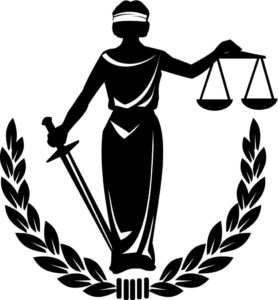Sanhedrin Insiders – Nicodemus or Joseph of Arimathea?
One of the mysteries of the Gospels is how the authors gained knowledge of inner workings of the Jewish Council. Two possibilities were Nicodemus and Joseph of Arimathea, members of the the ruling Sanhedrin’s Jewish Council.[1]

Early on, Nicodemus wanted to learn more about this new celebrity, Jesus of Nazareth. With his stature in the Jewish Council, it opened the door to set up a meeting with Jesus. Great caution was necessary with Jesus being the archenemy of the Council where exposure of their meeting could have dire consequences.
Taking the big risk, they agreed to a secret night-time meeting. An unofficial summit, so to speak, where one of the rulers of the Jewish Council, Nicodemus, met clandestinely with the leader of its arch-nemesis, Jesus of Nazareth.
Miracles performed by Jesus rang an element of truth with Nicodemus asking, “Rabbi, we know you are a teacher who has come from God. For no-one could perform the miraculous signs you are doing if God were not with him.”[2]
It was the response that completely threw Nicodemus when Jesus said, “unless one is born again, he cannot see the kingdom of God.” Incredulous, Nicodemus asked, “How can anyone be born after having grown old? Can one enter a second time into the mother’s womb and be born?”[3]
For a Pharisee who prided himself for righteously following the letter of the Law, a single act, to be born again was an entirely foreign concept. It was completely contrary to logic, much less Judaism’s beliefs that are unclear about the afterlife.[4] Pulled from a MyJewishLearning.com webpage header: “We Don’t Know, So Must Make Our Lives Count.”[5]
Jesus continued, “What is born of the flesh is flesh, and what is born of the Spirit is spirit.”[6] Explaining further led to the most famous quote of Jesus in all the Gospels, often seen on signs and T-shirts and the name of a song by country music superstar, Keith Urban, “John 3:16”:[7]
“For God so loved the world that He gave His only begotten Son, that whoever believes in Him should not perish but have everlasting life.” (NKJV)
Later in John’s account, another incident involving Nicodemus is a confidential meeting among the Jewish Council members themselves. The scenario would not otherwise be known unless someone who was present during the private meeting divulged the details to John.
Sanhedrin officers had been sent to listen to Jesus hopefully teaching heresies, then bring him back to the chief priests and Pharisees for judgement. When the officers returned empty-handed, the Council authorities were baffled and asked, “Why didn’t you bring him back with you?” The officers responded, “No one ever spoke like this man!”[8]
Nicodemus asked his fellow Sanhedrin peers, “Does our law judge a man before it hears him and knows what he is doing?”[9] Their response did not answer the question, rather mocked Nicodemus, “Surely you are not also from Galilee, are you? Search and you will see that no prophet is to arise from Galilee.”[10]

At the crucifixion scene of Jesus another Sanhedrin Pharisee is introduced, Joseph of Arimathea, a Judean town.[11] Joseph is identified as a rich man, a prominent member of the Sanhedrin Council and a follower of Jesus.[12]
Joseph appears in all four Gospel accounts in the scene when Jesus hung dead on the cross. Taking great courage to overcome his fear of both the Sanhedrin and the fearsome Roman ruler responsible for having Jesus crucified, Joseph approached Pilate to ask for the body.[13]
Arriving at Pilate’s headquarters before the execution squad Centurion’s report, Pilate was surprised to hear Jesus was already dead.[14] Pilate first wanted confirmation from the Centurion that Jesus was, in fact, dead.[15]
Forced to wait for a decision, it was no doubt nerve-wracking – a despised Jew waiting at the Roman government local headquarters. Upon confirmation from the Centurion, Pilate granted the body of Jesus to Joseph.[16] Knowledge of these distinctive details were limited only to Pilate and Joseph plus any other Roman staff who may have been the the room.
Back at the Golgotha crucifixion scene, Joseph claimed the body from the Roman quaternion. He was joined by none other than Nicodemus who brought 75 pounds of burial spices, a mixture of myrrh and aloes – very specific details.[17]
Together, the two Pharisee Council rulers carried the body of Jesus to the nearby unused tomb owned by Joseph. There they wrapped the body in linens with the burial spices according to Jewish custom.[18]
In the next phase of the Gospel accounts, the Resurrection, neither Nicodemus nor Joseph are mentioned again, but they are still part of the story. As members within the ruling Jewish Council, if not present, they were at least aware that the Jewish leaders again approached Pilate the next day.[19] It was a meeting with only the Romans, namely Pilate with his staff, and the Jewish leaders in attendance – none of the followers of Jesus were present.
Affirming to Pilate that Jesus was dead and buried, the Jewish authorities requested a means to secure the tomb to protect against theft of the body by followers of Jesus. To convince Pilate, they had to acknowledge Jesus prophesied he would rise from the dead after three days.[20] Pilate seemed annoyed by yet another meeting with the Jews and told them to secure the tomb as best they could.
No one had informed the followers of Jesus about the joint Roman-Jewish security actions according to Gospel account. The exclusivity of the information is demonstrated by the women of Galilee who planned to go to the tomb at sunrise after the Sabbath. Wondering if anyone would be there to help roll away the stone from the entrance, they apparently were not aware that the tomb was sealed and guarded by the koustodia.[21]
As members within the ruling Sanhedrin Jewish Council, Nicodemus and Joseph of Arimathea were privy to the inner workings of the Jewish leadership, each was called out by name in the Gospels. John, the eyewitness author, even quoted Nicodemus indicating he was a source.[22]
Insider information of the Jewish Council lends significant credibility to the truthfulness of the Gospels. One key consideration is a fact that goes unstated – the Jewish Council did not deny the statements or actions of Nicodemus and Joseph of Arimathea as written in the publicly distributed Gospels.
Were either or both Nicodemus or Joseph of Arimathea the insiders who provided important details of the Jewish Council?
Updated October 1, 2023.
This work is licensed under a Creative Commons Attribution-NonCommercial-NoDerivatives 4.0 International License.
REFERENCES:;
[1] John 12:42. John 3:1. Net.Bible.org. Greek text. 2020. <http://classic.net.bible.org/verse.php?book=Joh&chapter=3&verse=1> “archon <758>” Net.Bible.org. 2020. <http://classic.net.bible.org/strong.php?id=758> Mark 15:43; Luke 23:50. Net.Bible.org. Greek text. <http://classic.net.bible.org/search.php?search=Arimathea&mode=&scope=> “bouleutes <1010> Net.Bible.org. 2020. <http://classic.net.bible.org/strong.php?id=1010>
[2] John 3:2. NIV. “Who was Nicodemus in the Bible?” GotQuestions.org. image. n.d. <https://www.gotquestions.org/img/OG/Nicodemus-in-the-Bible.jpg>
[3] John 3:4. NRSV.
[4] Josephus, Flavius. Wars of the Jews. Book II, Chapter VIII.14. Trans. and commentary. William Whitson. The Complete Works of Josephus. 1850. <http://books.google.com/books?id=e0dAAAAAMAAJ&printsec=frontcover&source=gbs_ge_summary_r&cad=0#v=onepage&q&f=false> Moffic, Evan. “Do Jews Believe in an Afterlife?” ReformJudaism.org. 2020. <https://reformjudaism.org/practice/lifecycle-and-rituals/death-mourning/do-jews-believe-afterlife> Gilad, Elon. “What Is the Jewish Afterlife Like?” Haaretz.com. 2019. <https://www.haaretz.com/jewish/.premium-what-is-the-jewish-afterlife-like-1.5362876>
[5] Rose, Or N. “Heaven and Hell in Jewish Tradition.” MyJewishLearning.com. 2020. <https://www.myjewishlearning.com/article/heaven-and-hell-in-jewish-tradition>
[6] John 3:6. NET.
[7] Rossen, Jake. “The Unbelievable Life of the ‘John 3:16’ Sports Guy.” 2017. <https://www.mentalfloss.com/article/500515/unbelievable-life-john-316-sports-guy#:~:text=The%20%22John%203%3A16%22,%2C%20but%20have%20everlasting%20life.%E2%80%9D> Urban, Keith. “Keith Urban – John Cougar, John Deere, John 3:16 (Official Music Video).” YouTube.com. 2015.< https://www.google.com/search?rlz=1C1GCEB_enUS885US885&ei=X8ffXtCaI8-WsAXMz4fIAg&q=john+3%3A16+keith+urban&oq=john+3%3A16+keith+urban&gs_lcp=CgZwc3ktYWIQAzoECAAQR1CC2hBYpO4QYP_wEGgAcAN4AIABSIgB_QSSAQIxMZgBAKABAaoBB2d3cy13aXo&sclient=psy-ab&ved=0ahUKEwiQxsi_ofXpAhVPC6wKHcznASkQ4dUDCAw&uact=5>
[8] Luke 7:45. NET.
[9] John 7:51. NKJV.
[10] John 7:52. NSRV.
[11] Luke 23:51.
[12] Matthew 27:57, Mark 15:43, Luke 23:50-52, John 19:38. Mark 15:43. Net.Bible.org. Footnote #1. <http://classic.net.bible.org/verse.php?book=Mar&chapter=15&verse=43#> Luke 23:50. Net.Bible.org. Footnote #2. <http://classic.net.bible.org/verse.php?book=Luk&chapter=23&verse=50> “Who was Joseph of Arimathea? GotQuestions.org. image. n.d. <https://www.gotquestions.org/img/OG/Joseph-of-Arimathea.jpg>
[13] Matthew 27:58-59; Mark 15:43; Luke 23:51-52; John 19:38.
[14] Mark 15:44.
[15] Mark 15;44-45.
[16] Luke 23:51.
[17] Matthew 27:33; Mark 15:22; John 19:17-19, 39. CR Luk3 23:33.
[18] Matthew 27:57; John 19:40-42.
[19] Matthew 27:62-66; Luke 23:54; John 19:42.
[20] Matthew 27:62-27.
[21] Mark 16:3.
[22] John 3:1, 4, 9; 7:50, 19:39.

